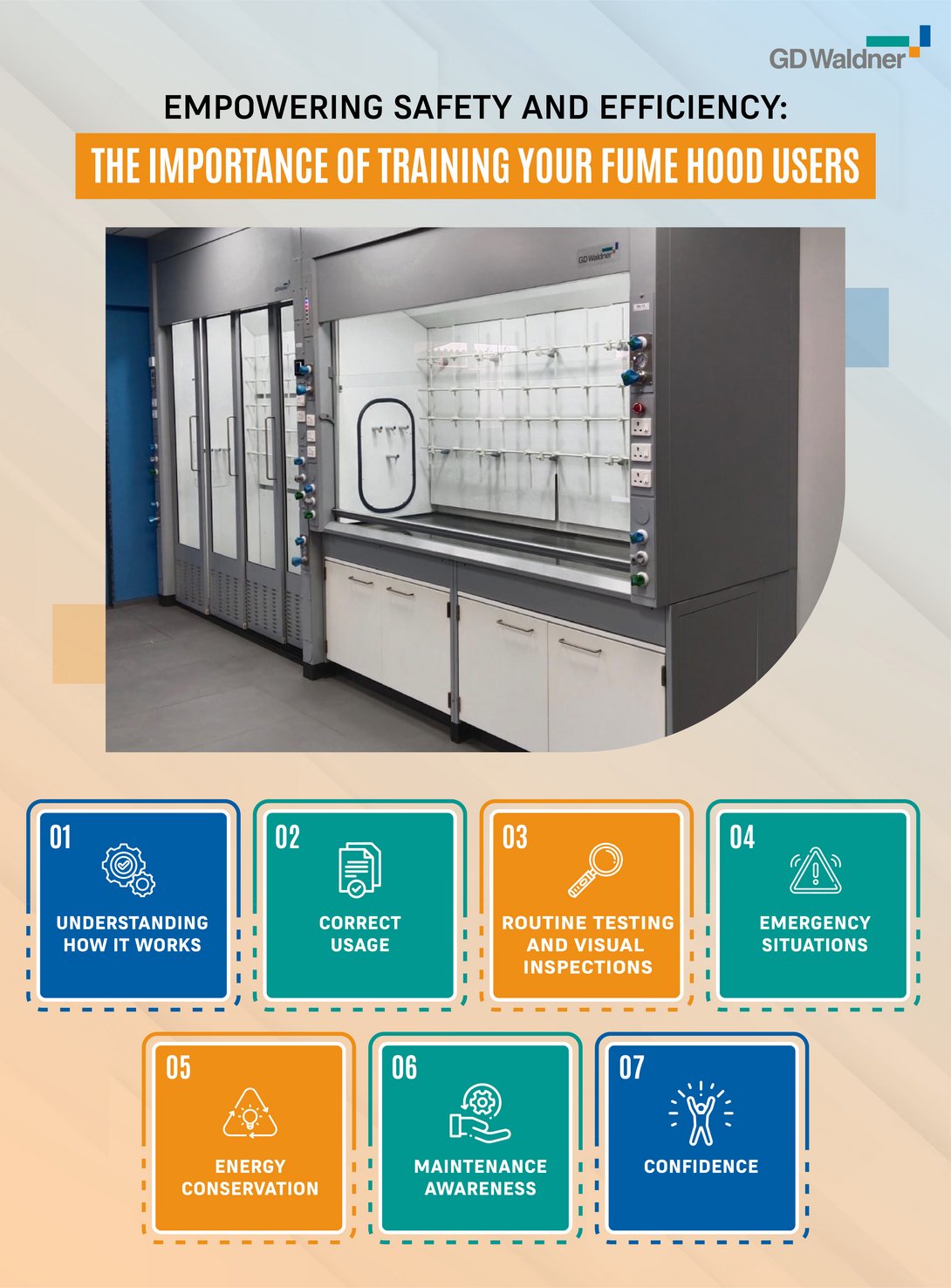Fume hoods stand as sentinels of safety in laboratories, shielding us from hazardous vapours, dust, and chemical fumes. But envision this: a three-legged stool. If one leg falters, stability is at risk. Similarly, fume hood performance hinges on a balanced trio:
- Fume Hood Design & Lab Layout
- Laboratory Ventilation System
- Hood Users & Lab Occupants
Yet, even the most advanced fume hood is only as effective as its user. It's not just about the hood; it's about how we engage with it. Without proper training, inadvertent missteps can compromise both personal safety and the hood's efficiency. Let's get into whys and hows of it.
1. Understanding How It Works: Seems obvious, right? But you'd be surprised how often this is overlooked. Fume hood users need to understand the basic workings of the hood—how air is drawn in and vented out, the function of the sash, and how to use the controls. This forms the foundation for safe and effective usage.
2. Correct Usage: Every fume hood has its dos and don'ts. Training ensures users know these—like not storing chemicals in the hood, keeping work at least 6 inches from the sash opening, and not blocking the airflow. Misusing a fume hood can not only damage the equipment but also expose users to potential hazards. Additionally, contaminated lab air can damage lab infrastructure and compromise the quality of your work.
3. Routine Testing and Visual Inspections: Regular tests of the hood's performance are important for maintaining a fume hood effectiveness. Users need to be trained to perform these checks and recognize when the hood is not performing optimally. The use of the Tri-Color Air Visualizer is a great educational tool.
4. Emergency Situations: In case of an emergency like a chemical spill or fire, users need to know how to respond. Training in emergency protocols is crucial. Your safety plan should be written, and all users should be up-to-date on the proper procedures.
5. Energy Conservation: Fume hoods are energy-intensive. Educating users about energy conservation practices, such as closing the sash when not in use, can lead to significant energy savings for your lab.
6. Maintenance Awareness: Users who understand how a fume hood works and how to use it are more likely to notice when something is missing. This early detection can prevent small issues from becoming major problems and help maintain the longevity of your hood.
7. Confidence: Lastly, well-trained users are confident users. They can go about their work knowing they're protected, without the nagging worry of "Am I doing this right?" Confidence boosts morale and productivity.
Training is not a one-and-done thing. Regular refreshers and updates as technology and protocols change are just as important. Invest in quality training for your fume hood users—it's an investment in safety, and that's the best kind there is. Many labs use the annual testing of the fume hoods as a training opportunity.

